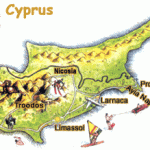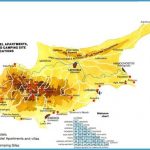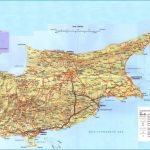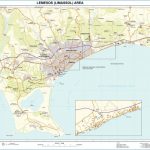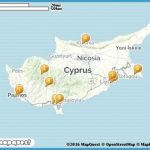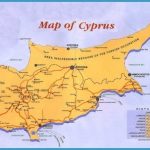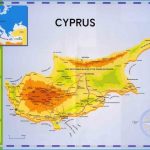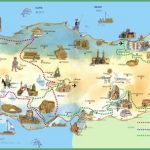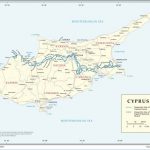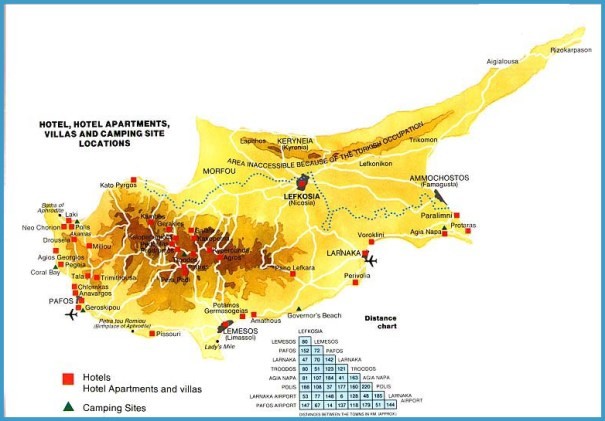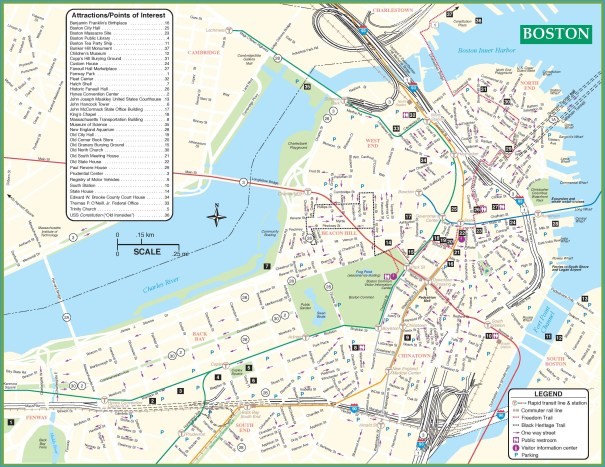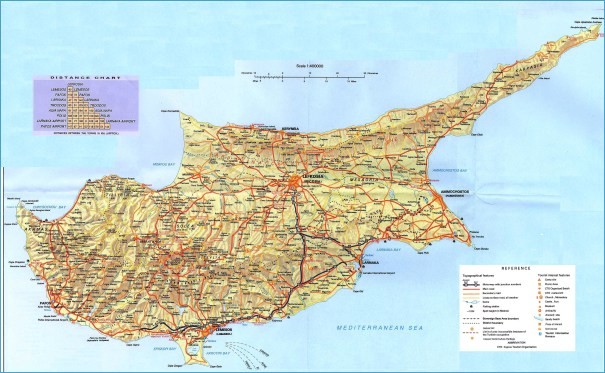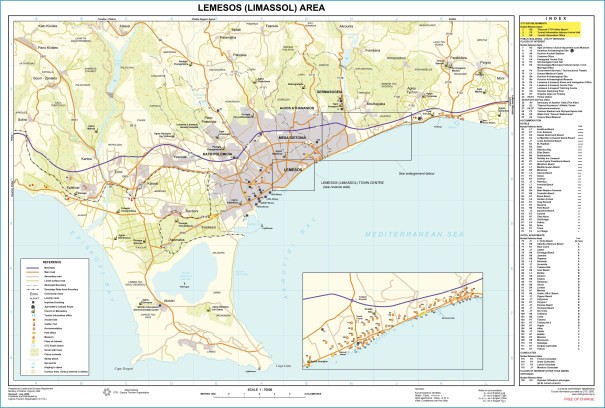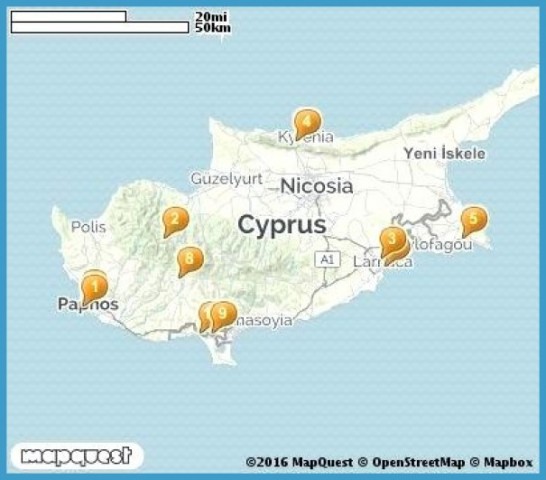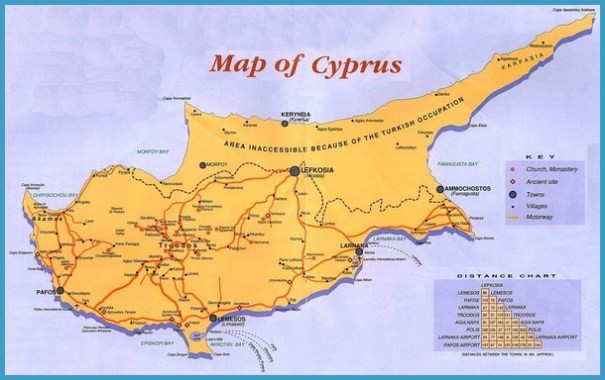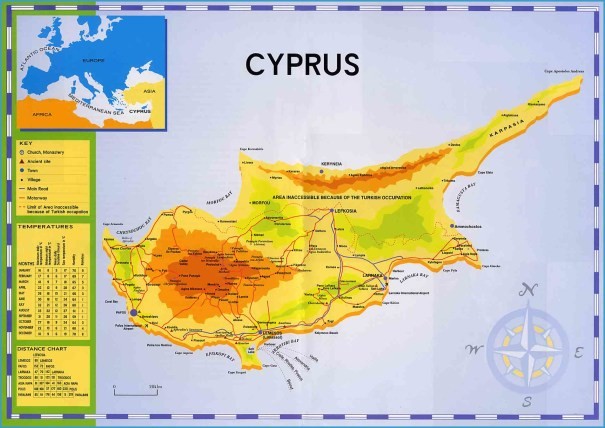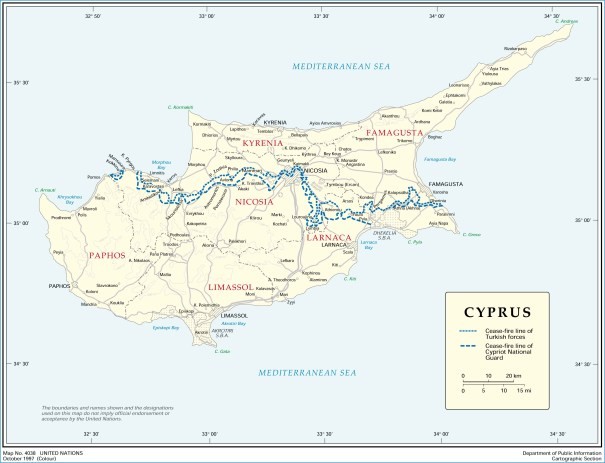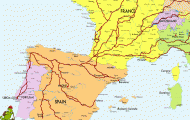Extensive isolated beach (Lara)
PHYSICAL SETTING
It is currently believed that the most conspicuous geological feature of Cyprus is the collision of the Euro-asian and African tectonic plates which took place about 80 million years ago. About 25 million years ago, during the Lower Miocene era, the igneous complex of Troodos constituted an isle, while the Mesaoria plain, to the north, and the Pentadactylos or Kyrenia range, further north, were under the sea. By the end of the Miocene era, about 11 million years ago, the Pentadactylos started elevating above the sea, while the Mesaoria plain remained under the sea, to appear much later during the Pleistocene era, about one million years ago. All other details of the geological history of Cyprus, particularly those concerning the coastline, were formed later. It is this tempestuous geological history which is responsible for a great variety of rocks: igneous, metamorphic and sedimentary, hard and soft, fractured and unaltered, of different colour and texture, now at a small distance from each other on the island’s surface. These rocks together with other factors have played a significant role in the formation of the Cypriot landscape. Tied up with the rock types are the varied soils of Cyprus which give a distinct colour to the scenery of the country. The present topography of Cyprus can be sub-divided into five morphological regions: (a) Kyrenia or Pentadactylos range. This is the northern mountain chain of Cyprus, appearing as a narrow arc-like strip of land. The highest summit, Kyparissovouno, reaches a height of 1024 metres and is made up of relatively hard limestones.
map of tourist attractions in cyprus
The Karpasia peninsula, further east, is considered to be a continuation of the Kyrenia range, although the region has not experienced the complicated faults as well as the other serious tectonic movements of the latter. (b) The ophiolite massif of Troodos. The central-western part of Cyprus is occupied by the igneous massif of Troodos. The resistant igneous rocks of this mountain block (dunites, serpentinites, gabbros, diabase, etc) give rise to a harsh and rugged scenery, with deep, steep-sided valleys and ravines as well as abrupt, sometimes, vertical slopes. Chestnut lavas, being relatively soft rocks, give rise to gentle, rounded hills. The highest point on the massif is the Olympos summit, 1951 metres a.s.l. The rivers which commence from the top of the mountain have established a radial drainage pattern which ends up in the sea. Many of the dams of Cyprus are situated in this region. It is also in the Troodos massif that lie three significant waterfalls: Kalidonia, Mesapotamos and Chantara (Foini). (c) The hills around the igneous massif of Troodos and south of the Kyrenia range. They extend mainly east, south and west of the ophiolite complex of Troodos and consist mainly of chalks. They give rise to a rounded, bare, white landscape, under dry-fed cultivations, particularly vineyards. The vine-growing villages of Pafos and Limassol districts fall within this region.
Table lands (Pera) showing old land surfaces
Some features associated with the chalky landscape are the gorges, “cuestas”, river captures, various river systems, etc. The hilly region of Cyprus includes also hills between the central plain and Kyrenia range, as well as some hills north of the Troodos massif. The well known geological formation of Mamonia Complex, made up of sedimentary and igneous rocks, can be considered as part of the hilly landscape, appearing in small areas mainly in Pafos and Limassol. (d) Central plain. The central plain of Cyprus, often known as Mesaoria, lies between the two mountains and has a very low altitude which does not exceed 180metres a.s.l. close to Nicosia. It consists of sediments which have been transported and deposited by streams in recent geological times from the Troodos and the Kyrenia ranges. Table lands (mesas) with their height above the surrounding low-lying areas, particularly around Nicosia, testify old land surfaces. The whole plain, from the Morfou bay in the west to Famagusta bay to the east, covers a distance of approximately 90km. Kokkinochoria area, in the extreme south eastern part, with an elevation of 70m, comprises a rich aquifer, the second most important in the island. The visitor is impressed by the deep red colour of the soils, from where the area obtained its name. (e) Coastal plains. Almost around Cyprus appear narrow coastal plains which in fact are raised beaches. In the north is the coastal plain of Kyrenia which is very narrow but with scenic laced beaches. To the south is the plain of Larnaka lying below 100 metres a.s.l. and composed of alluvium and terrace deposits of recent geological formations. The most important geomorphological feature is the Salt Lake separated from the sea by porous deposits.
map of cyprus tourist attractions
It is filled with water during the winter months, whereas in summer, on account of evaporation, it is dry. In the winter and spring months it constitutes an important wetland for migratory birds which lend a special colour to the landscape. The coastal plain of Limassol, lying below 200m, occupies mainly the Akrotiri peninsula with extensions to Pissouri-Avdimou to the west and small areas east of Amathous. The most conspicuous geomophological feature of the region is the Akrotiri Lake. In recent geological times a tiny isle existed between the capes Zevgari and Gata, while the coastline lay further to the north of the present-day lake. The rivers Kouris and Garyllis deposited substantial amounts of sands and gravels in their mouths, which eventually were transported by waves and currents as far south as the small isle. Thus, the material carried by Garyllis reached the eastern section of the isle, while the deposits of Kouris reached the western tip, linking, thus, the little isle with the mainland. The hollow in the middle, with the exception of the present-day lake, was filled with subsequent deposits. The sea water that fills the lake in winter penetrates through the porous deposits, while during the summer months evaporation dries up the lake. Still further west are the plains of Pafos and Chrysochou. The plain of Pafos, lying mainly below 200m, consists of a narrow coastal strip of land extending from Petra tou Romiou, close to the Pafos-Limassol administrative boundaries, up to the tiny settlement of St. George (Pegeia). The length of the plain is about 45km, while its width varies, though it does not exceed 8km. The coastal plain of Chrysochou extends east and west of Polis, including part of the narrow Chrysochou valley to the south. It is intensely cultivated with fruit trees, citrus, vegetables and a few banana plants.
Cyprus Map Tourist Attractions Photo Gallery
Tourist Attractions in Cyprus
Giant fennel (Anathrika) from Kokkinochoria
Kalidonia Waterfalls
The rich natural vegetation of Cyprus is explained by its geographical position among three continents. The flora may be divided into four broad categories: forests, maquis, garrigue and herbaceous plants. The forests occupy 1.591,13 sq. km and represent 17,2% of the total area of the island. The main forest trees are the wild pine (Pinus brutia), the Troodos pine (Pinus nigra) and the cedars (Cedrus brevifolia) which are found in the Cedar Valley, Tripylos and other places. On the igneous slopes grow mainly golden oaks (Quercus alnifolia) and strawberry shrubs (Arbutus unedo), while the mountain valleys carry hardwood species, such as plane trees, alder and maple. In the coastal areas, as at Akamas, junipers predominate. The maquis vegetation which grows mainly on siliceous soils, includes plants such as rose laurel, arbutus, myrtle, rosemary, etc. The garrigue which is a scrub vegetation grows mainly on limestone soils and includes such plants as lentisk, thyme and caper, as well as other aromatic xerophytes. The herbaceous plants are medium-sized with soft stems which become dry at certain seasons and are used for animal feeding. The same factors that influence the flora of Cyprus are responsible for the fauna of Cyprus. The leading species of present-day fauna are the tame animals. The moufflon, which has lived in the forests of Cyprus since ancient times, is a variety of wild sheep and is currently the only large wild animal on the island. In addition, Cyprus has a great variety of insects and mites. The position of the island between the relatively cold North-European countries and the warm countries of the African continent renders Cyprus an ideal stopover for migratory birds, particularly during the autumn, winter and spring months. Larnaka and Limassol lakes, for instance, attract a great number of migratory birds. The coastal waters of the island have a variety of fish, while crabs and sponges and certain echinodermata are also found.
The climate of Cyprus is mediterranean in character, with warm, dry summers and rainy, mild winters. Summer begins in mid-May and continues up to the middle of September. Winter begins in November and continues up to February. In between these two periods there prevail the two other seasons of the year, autumn and spring. The average rainfall of Cyprus over the last 30 years is 503mm. Snowfall is not a normal phenomenon in the plains, particularly in the coastal touristic areas, whereas on the Troodos massif snow can last for about 50 days a year. The average rainfall in the coastal plains is relatively low, ranging between 340 and 500mm, falling mainly during the winter months, with no rainfall or very negligible rainfall in the summer months (Pafos town: 428 mm, Polis Chrysochou: 474mm, Limassol town: 435mm, Larnaka town: 369mm, Kokkinochoria: 350mm). In Nicosia town the average rainfall is 324mm. In the hilly areas the average rainfall ranges between 500 and 750mm, falling mainly in the winter months with occassional or some rainfall in the summer months, while in the mountainous areas rainfall ranges between 750 and 1110mm with some rainfall in the summer months.
Attractions in Cyprus
Seagulls over the beach of Limassol
Temperatures vary also according to relief. In Pafos town, the mean daily temperature for Jan. is 13,1°C and for August 26,4 °C, in Polis 11,8°C for Jan and 26,5°C for August, in Limassol town 12,4°C and 27,1°C, in Larnaka town 11,4°C for Jan. and 27,3°C for July, in Paralimni 11,3°C for Jan and 27,2°C for July and in Nicosia town 10,6°C in Jan and 29,4°C in July. On the mountains there are variations. In Stavros tis Psokas, 790 metres a.s.l.daily temperature for Jan is 7,2°C and 25,2°C for August, in Prodromos, 1380 metres a.s.l. 3,2°C for Jan and 22,3°C for August.
July relative humidity in Pafos is 66%, in Polis 51%, in Larnaka 61%, in Paralimni 58% and in Nicosia 29%. Moreover, Pafos town experiences 8,6 days ground frost per year, Limassol town 10,5, Larnaka town 2,3, Paralimni 8,3 and Nicosia town 23,1.
Pafos as a whole experiences relatively high sea temperatures ranging from 15,5°C in Febr. to 25,9°C in August and Limassol from 15,5°C in Febr. to 24,7°C in Sept. In all coastal areas of Cyprus sunshine duration is very high. In Pafos it is 5,9 hrs in Febr. 10,9 in May, 12.3 in July and 8,5 in Oct. In Larnaka it is 6,7 in Febr. 10,8 in May, 12,5 in July, 7,8 in Nov. In
Limassol it is 6,5 hrs in Febr. 10,8 in May, 12,4 in July and 8,8 in Oct. In Nicosia town the mean daily sunshine duration is 6,3 hrs in Febr. 9,0 in April, 12,3 in June and 8,2 in October.

